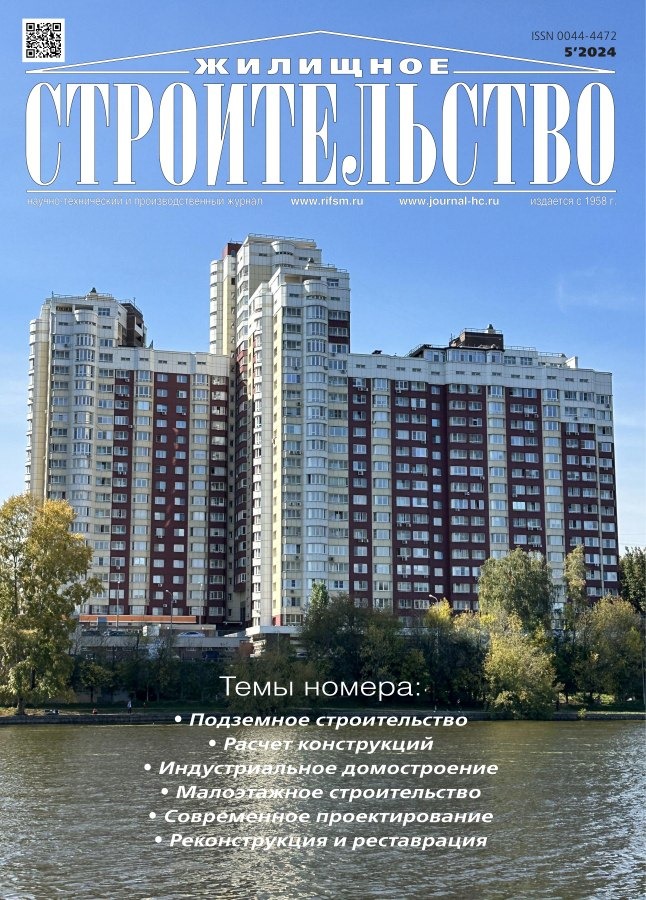Transformation of Requirements for the Design of University Campuses in Modern Conditions
- Autores: Popov A.V.1, Golubeva A.A.1, Sergeeva I.A.1, Starkova A.A.1
-
Afiliações:
- National Research Moscow State University of Civil Engineering
- Edição: Nº 5 (2024)
- Páginas: 35-41
- Seção: Articles
- URL: https://modernonco.orscience.ru/0044-4472/article/view/634787
- DOI: https://doi.org/10.31659/0044-4472-2024-5-35-41
- ID: 634787
Citar
Texto integral
Resumo
The principles of the formation of comfortable and modern-compliant complexes and buildings of dormitories for nonresident and foreign university students are considered. Often, dormitories of universities in the Russian Federation do not have the proper level of comfort for living. Students are a unique category of housing consumers, they have high potential and limited financial resources. To determine the directions for improving the architectural and urban planning organization of housing for students of higher educational institutions, taking into account modern requirements, a sociological study was conducted, as a result of which a hierarchy of needs of students living in temporary housing was revealed; the most significant parameters of buildings and service infrastructure were determined, taking into account the socio-demographic characteristics of residents; the main requirements imposed by students on infrastructure were determined the campus of a higher educational institution; the necessity of an integrated approach to the organization of the university campus was confirmed.
Texto integral
Sobre autores
A. Popov
National Research Moscow State University of Civil Engineering
Autor responsável pela correspondência
Email: da945@yandex.ru
Doctor of Architecture, Associate Professor of the Department of Urban Planning
Rússia, 26, Yaroslavskoe Highway, Moscow, 129337A. Golubeva
National Research Moscow State University of Civil Engineering
Email: skayrena@gmail.com
Student
Rússia, 26, Yaroslavskoe Highway, Moscow, 129337I. Sergeeva
National Research Moscow State University of Civil Engineering
Email: sergeevainnaalekseevna@gmail.com
Student
Rússia, 26, Yaroslavskoe Highway, Moscow, 129337A. Starkova
National Research Moscow State University of Civil Engineering
Email: starkova.a.a@mail.ru
Student
Rússia, 26, Yaroslavskoe Highway, Moscow, 129337Bibliografia
- Попов А.В. Концепция архитектурного формирования кампусов вузов в России: Дис. ... д-ра арх. Н. Новгород, 2022. 622 с.
- Popov A.V. The concept of architectural formation of university campuses in Russia. Doctor Diss. (Architecture). Nizhny Novgorod. 2022. 622 p. (In Russian).
- Sineeva N. Some aspects of sustainable urban planning using environmental solutions. IOP Conference Series: Earth and Environmental Science. 2021. 937 (4). 042024. doi: 10.1088/1755-1315/937/4/042024
- El-Darwish I.I. Enhancing outdoor campus design by utilizing space syntax theory for social interaction locations. Ain Shams Engineering Journal. 2021. July. Vol. 13. Iss. 1. 101524. https://doi.org/10.1016/j.asej.2021.06.010
- Gomez T., Derr V. Landscapes as living laboratories for sustainable campus planning and stewardship: A scoping review of approaches and practices. Landscape and Urban Planning. 2021. September. Vol. 216. 104259. https://doi.org/10.1016/j.landurbplan.2021.104259
- Stetsky S., Dorozhkina E. Some contemporary aspects of master planning, design and development for suburban territories of large cities. E3S Web of Conferences. 2023. 371. 03011. https://doi.org/10.1051/e3sconf/202337103011
- Iranmanesh A., Soad Abokhamis Mousavi. City and campus: Exploring the distribution of socio-spatial activities of students of higher education institutes during the global pandemic. Cities. 2022. June. Vol. 128. 103813. doi: 10.1016/j.cities.2022.103813
- Danilina N., Tsurenkova K., Berkovich V. Evaluating urban green public spaces: the case study of Krasnodar Region Cities, Russia. Sustainability. 2021. Vol. 13. Iss. 24. Article 14059. doi: 10.3390/su132414059
- Zetong J., Benchen Fu. Research on the niche strategy of campus planning. Energy Procedia. 2019. January. Vol. 157, pp. 782–792. doi: 10.1016/j.egypro.2018.11.244
Arquivos suplementares













